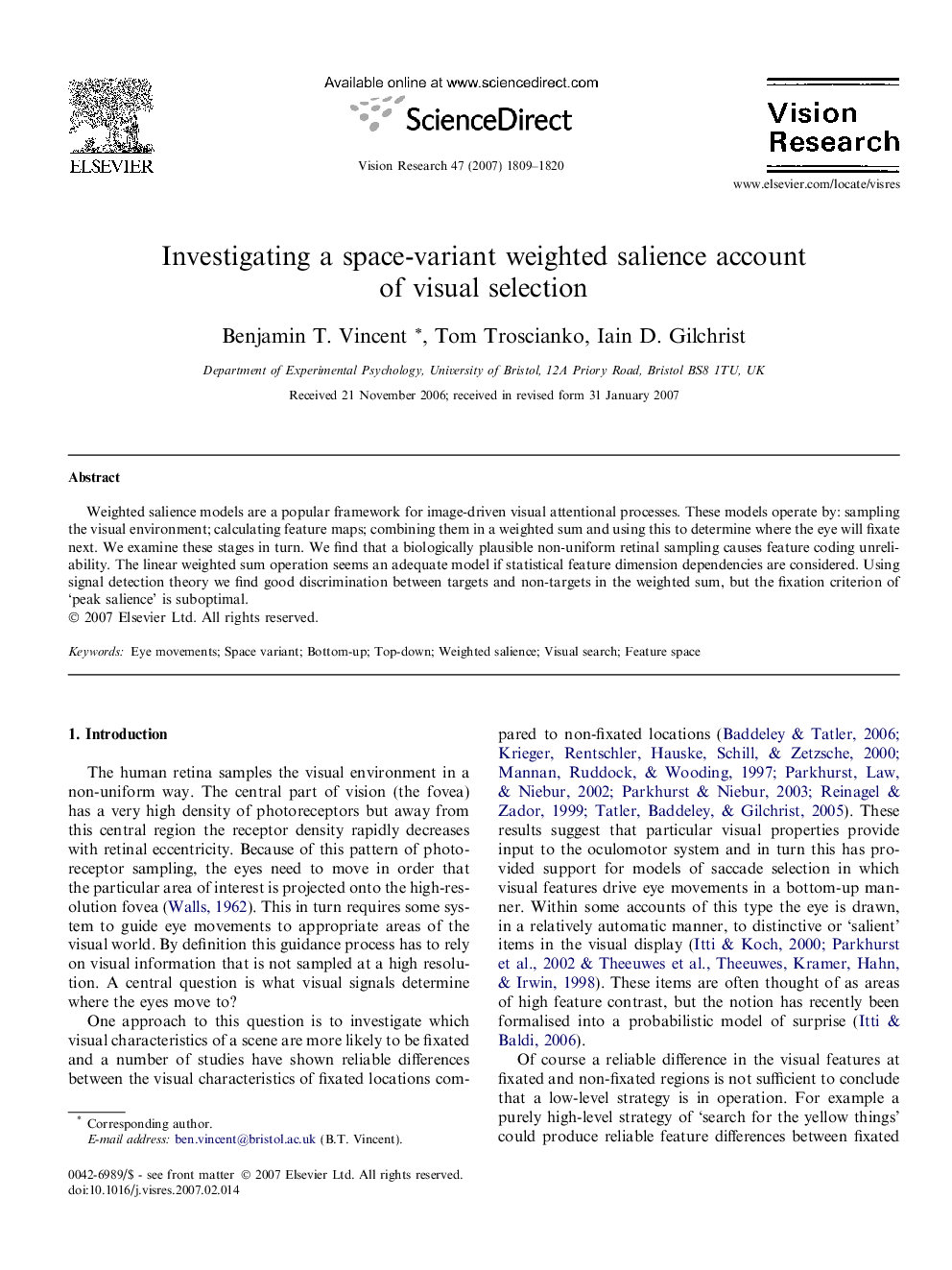| Article ID | Journal | Published Year | Pages | File Type |
|---|---|---|---|---|
| 4036258 | Vision Research | 2007 | 12 Pages |
Abstract
Weighted salience models are a popular framework for image-driven visual attentional processes. These models operate by: sampling the visual environment; calculating feature maps; combining them in a weighted sum and using this to determine where the eye will fixate next. We examine these stages in turn. We find that a biologically plausible non-uniform retinal sampling causes feature coding unreliability. The linear weighted sum operation seems an adequate model if statistical feature dimension dependencies are considered. Using signal detection theory we find good discrimination between targets and non-targets in the weighted sum, but the fixation criterion of 'peak salience' is suboptimal.
Related Topics
Life Sciences
Neuroscience
Sensory Systems
Authors
Benjamin T. Vincent, Tom Troscianko, Iain D. Gilchrist,
